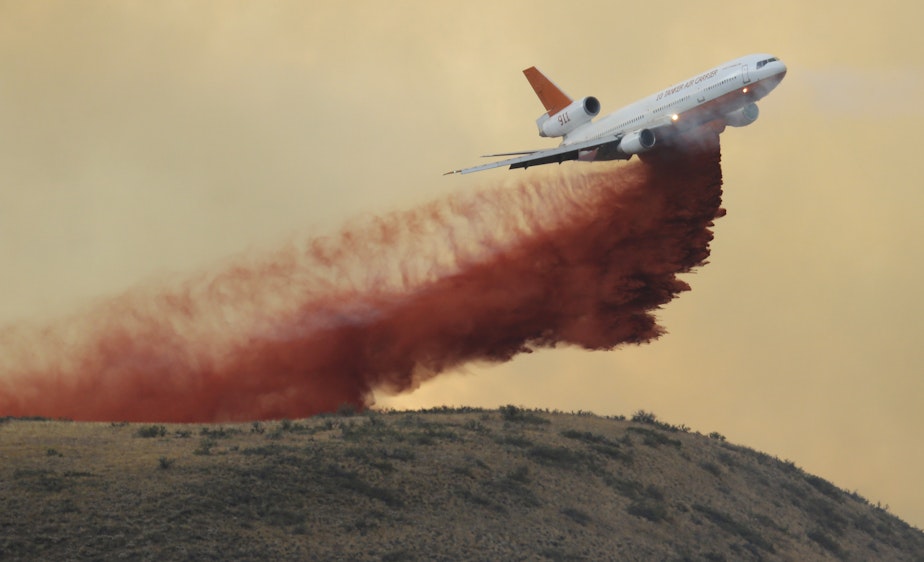Wildfires near Seattle are earlier, faster and more intense than usual

State officials are investigating the causes of two forest fires northeast of Seattle.
With no lightning reported in the Oso or Gold Bar areas where the fires started, officials suspect they were caused by humans, either accidentally or intentionally.
Scientists say a month of record-breaking hot, dry weather helped fuel the fires in the normally wet foothills of the Cascades. Global emissions of carbon dioxide, along with a strong El Niño, have helped turn up the thermostat locally and around the world.
April was the seventh month in a row to break a global high-temperature record, according to figures released by NASA over the weekend.
Sponsored
Washington state averaged 6.3 degrees Fahrenheit warmer than its 30-year average for April, according to Karin Bumbaco, assistant Washington state climatologist.
"That’s really warm," Bumbaco said. "Usually we're within 2 degrees Fahrenheit of normal."
Only in 1934 during the Dust Bowl era did Washington state have a warmer April.
Last month, Seattle, Bellingham, Olympia and Wenatchee all had their warmest Aprils on record. Sea-Tac Airport hit 89 degrees on April 18, the warmest April temperature in Seattle history going back to 1894.
Warmer, drier, earlier
Sponsored
As of Monday afternoon, both fires were mostly contained.
Both fires started in recently logged areas, which can dry out and become combustible more easily than older forests.
"Think of what a clear cut looks like," biologist Dave Peterson with the U.S. Forest Service Pacific Northwest Research Station in Seattle said. "It's open. There's definitely more air circulation in there. There's less shade." Underneath a forest canopy, woody material stays wetter and much less likely to catch fire, he said.
Peterson lives on a tree farm across a ridge from the Hot Shot fire northwest of Oso.
"We've been smelling smoke in the morning here today, and previous days," he said.
Sponsored
The Hot Shot fire — named for the Sierra Pacific-purchased timber sale where it started — has burned 67 acres, while the Proctor Creek fire, between Gold Bar and Index, Washington, has burned 352 acres, according to the incident management team fighting both fires.
Peterson said small forest fires aren't unusual where he lives. Two years ago, his family was instructed to evacuate as a fire charged downhill toward their home.
"But what is unusual is to have these fires during the month of May," Peterson said.
"This early in the season, it's very unusual," said Randy Shepard, incident team spokesperson. "Normally conditions are very wet and soggy."
Shepard said that in his decades of working on fires in Washington, he could not remember any that have grown as quickly and intensely as these have this early in the fire season.
Sponsored
"You have to have just the right conditions for a fire to get burning this time of year," Peterson said.
He said even a short heat wave can dry out a damp forest enough to get it to burn.
Washington state has had two summers in a row of extreme wildfires.
The National Interagency Fire Center is forecasting a return to more normal fire conditions in the Northwest this summer.
The record-warm April melted off much of the state's snowpack, sending the volume of mountain snow in many areas down to 75 percent or less of normal levels. But this year's snowpack — a natural reservoir of moisture that helps forest soils stay moist through much of the summer — is in much better condition than it was in 2015, when Gov. Jay Inslee declared a drought emergency.
Sponsored
But scientists say that as the global climate changes in decades ahead, extreme could become the new normal, both for heat waves and forest fires.
"We can expect a lot more area to burn, and we can also expect a longer fire season," Peterson said.

